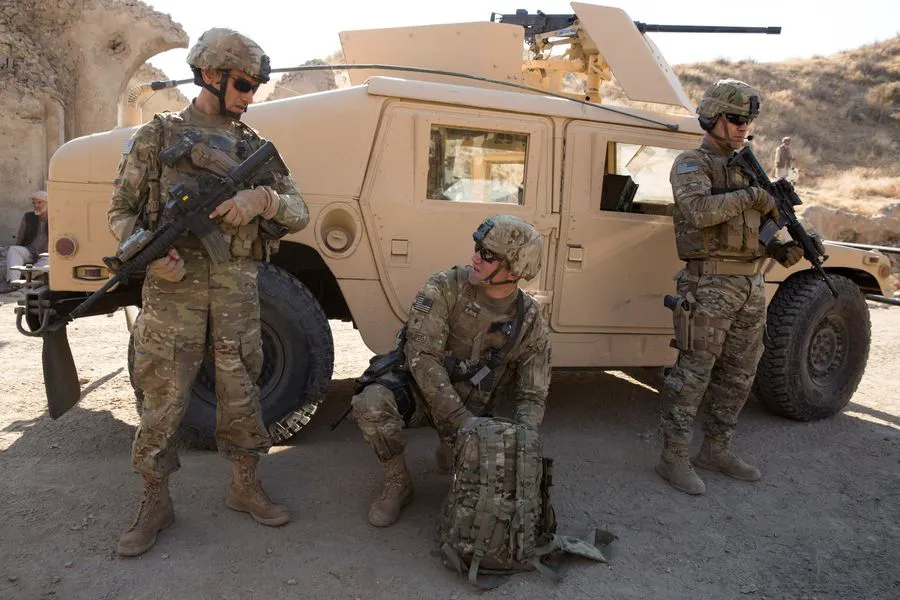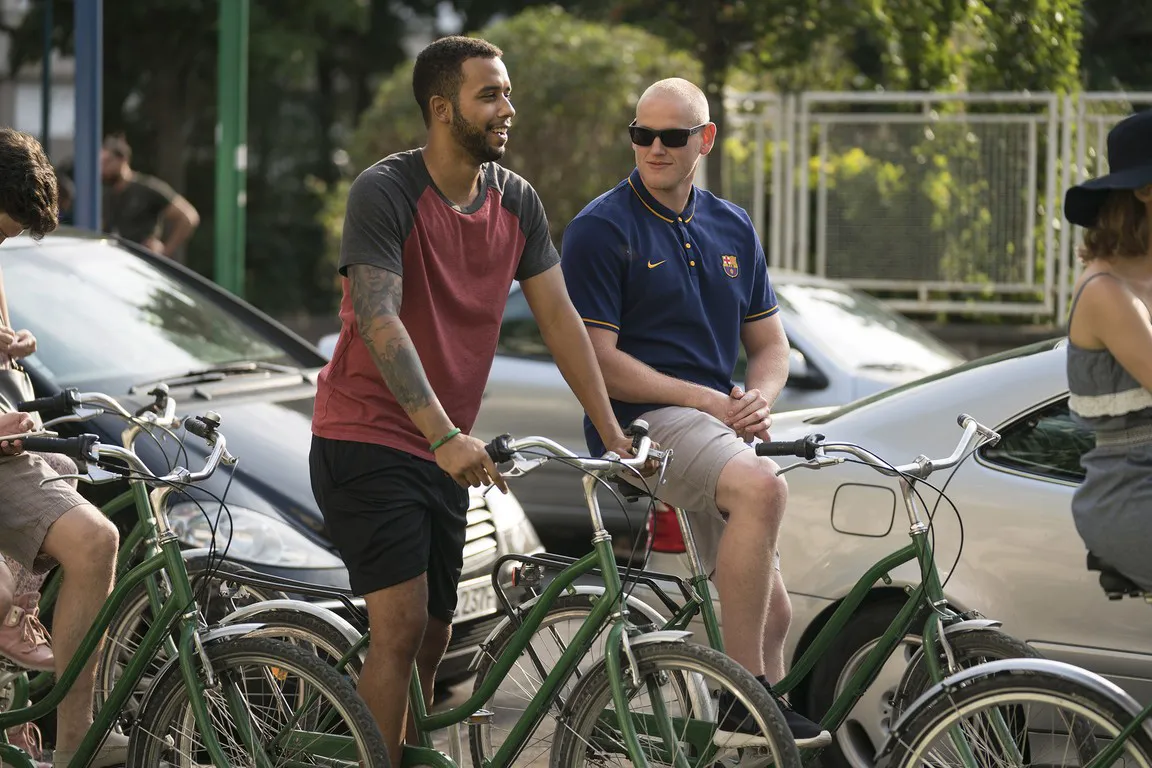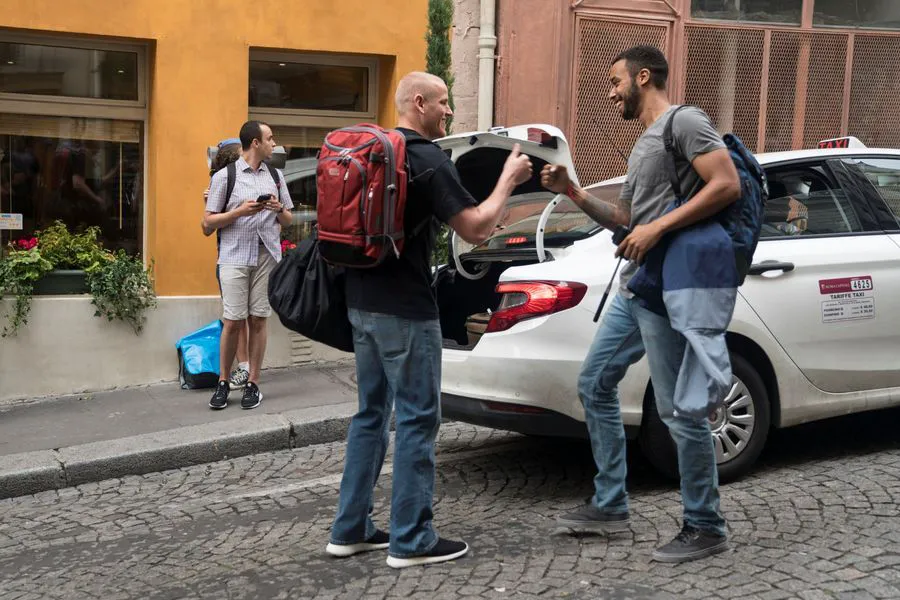Unseen Cinema: A Look at “The 15:17 to Paris”
In our weekly “Missed at the Box Office” segment, we highlight films that may not be playing in Russian cinemas but still deserve your attention.
Imagine three lifelong friends from Sacramento, reuniting for a European vacation after years apart. Their journey through the iconic cities of Italy, Germany, and the Netherlands culminates in a high-speed train ride to Paris. However, their adventure takes a terrifying turn when they, along with other passengers, find themselves facing a heavily armed terrorist. Through quick thinking, the values instilled in them during childhood, and the military training Spencer received, they manage to thwart the attack. The trio returns to California, not just as tourists, but as heroes.

Clint Eastwood’s reputation in Hollywood is undeniable. He’s not only a significant artistic figure but also a staunch Republican, a man of strong moral principles, and an embodiment of American patriotism. But can even a titan like Eastwood be immune to missteps? While everyone faces challenges, even Eastwood’s apparent failures are met with a certain anticipation, knowing that his talent and sharp mind are simply expressing themselves in unexpected ways.

A Seemingly Simple Story
At first glance, Eastwood’s “The 15:17 to Paris” might seem overly simplistic, as if the director has nothing profound to say. Based on the true story of a thwarted terrorist attack, the film’s climax lasts only a few minutes. This can make the film feel drawn out, with little happening until the brief, almost underwhelming, confrontation. However, a closer look reveals unexpected layers, carefully crafted by Eastwood.

In reality, the first person to resist the terrorist on the train was a Frenchman who declined to reveal his name or accept any awards, fearing retaliation from Islamic radicals.
An Unconventional Casting Choice
One of the film’s most intriguing aspects is Eastwood’s unconventional casting choice, reminiscent of experiments by directors like Steven Soderbergh or Spike Jonze. Instead of professional actors, he cast the actual individuals who intervened in the attack. With only two years having passed since the event, the real-life heroes hadn’t changed significantly. This decision transforms the film into a kind of “investigative experiment” or “reenactment,” allowing Spencer Stone, Anthony Sadler, and Alek Skarlatos to relive that fateful day. Did these non-professional actors succeed? For the most part, yes. While their performances may occasionally lack emotional nuance, and their lines sometimes feel recited, the trio doesn’t become the film’s weakest link.

Spencer Stone, who sustained the most injuries during the confrontation, was attacked by a psychopath just eight weeks after the Paris train incident, suffering multiple stab wounds to the back. Despite the severity of the injuries, Stone made a swift recovery.
Fate and Destiny
Another significant theme in “The 15:17 to Paris,” less prominent in Eastwood’s previous work, is the idea of predestination and the guiding hand of fate. Like M. Night Shyamalan’s “Signs,” where characters unknowingly prepare for a pivotal encounter, Eastwood emphasizes the concept of “fate.” The protagonists repeatedly defy rules, prioritize others’ lives, and acquire military and medical knowledge, all leading to the moment they disarm the terrorist and save a wounded passenger. While this theme is presented somewhat heavy-handedly, with the characters almost forced to travel to Paris, Eastwood’s conviction is undeniable. He believes it was their destiny, and he’s not about to be swayed.

A One-Sided Perspective?
However, Eastwood’s directness also has its drawbacks. His portrayal of the terrorist’s character and motives is somewhat biased. While the court couldn’t prove that the attacker planned a terrorist act, suggesting it might have been a robbery gone wrong, the film unequivocally depicts him as an agent of evil, entering the train car filled with innocent passengers shouting “Allahu Akbar!” This provides an opportunity for viewers to explore the subject further independently. After all, even Eastwood isn’t infallible.
Critics and audiences in the U.S. didn’t receive “The 15:17 to Paris” particularly well, largely because expectations for Eastwood are so high. He’s expected to deliver masterpiece after masterpiece, but instead, he offers an unconventional perspective, explores unfamiliar forms, and addresses a sensitive topic. While “The 15:17 to Paris” may not be “Gran Torino” or even “American Sniper,” it’s still Eastwood, a staunch patriot who places the military above all else. He’s worth listening to, even if his message sometimes sounds like the rumble of a high-speed train.